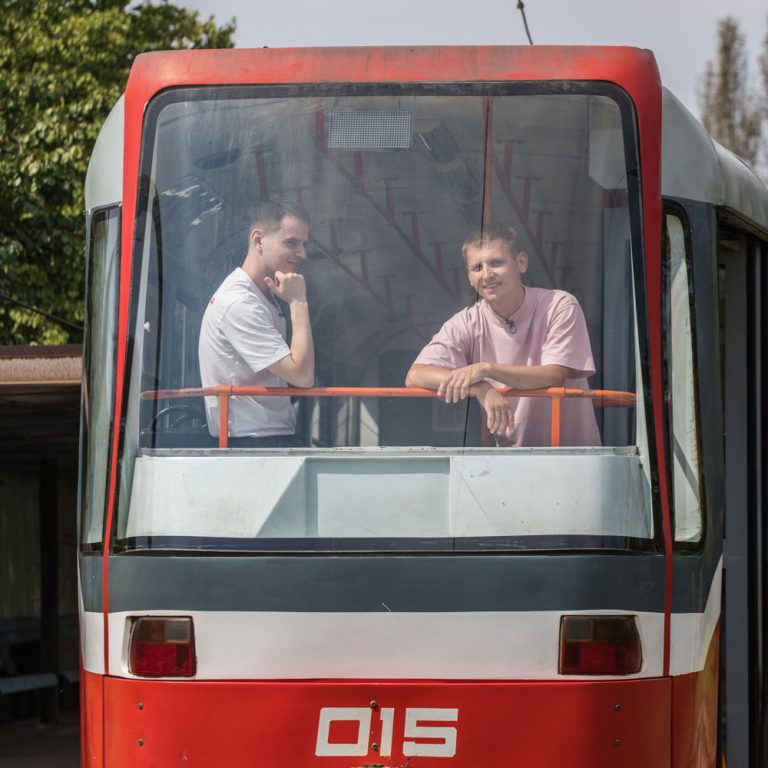In the Ambassadors project, well-known artists from different cities around Ukraine turn into informal guides, showing the places that tourists aren’t usually told about. In our seventh story, two members of the band Brunettes Shoot Blondes — Andrii Kovaliov and Roman Sobol — show us the city of Kryvyi Rih. Bogdan Logvynenko, founder of the Ukraïner project, set out with the boys to take a look at the life of the city.
— So how did you meet?
— Roman: Oh, I don’t know how we met. I reckon we’ve always known each other. We weren’t really friends, but I was always aware of Andrii. I guess it was Shelter+ that brought us together: it’s a cultural hub in Kryvyi Rih, where you can draw inspiration. It’s all there: music, and any other form of creativity.
In the early 2000s in Kryvyi Rih, brothers Roman and Yulii Morozov and their friends turned an abandoned kindergarten into a public cultural centre, Shelter+. The centre has a recording studio and rehearsal space, a gym, several alternative education clubs, theatre studios and much more besides. Roman Morozov remembers how Shelter+ became the launch pad for the band Julia Sleeps At The Kitchen, which later transformed into Brunettes Shoot Blondes, and explains why cooperation is important for reaching goals: “The concept of Shelter+ is that we wanted to create something in the city for ourselves. And while we were meeting our own needs, we also wanted to share it with others. Much of what we’re doing doesn’t fit into the context of Kryvyi Rih. But that’s our conscious choice: to stay here, not to leave the country. That’s our vocation, and we’re happy to be a part of Kryvyi Rih.”
— How did you find out about Shelter+?
— Andrii: I found out about Shelter+ through my first band (Julia Sleeps At The Kitchen — ed.). Our drummer used to spend time there, and he suggested that we play our first gig there. And it’s also a place where anybody can try doing something new, discover new talents.
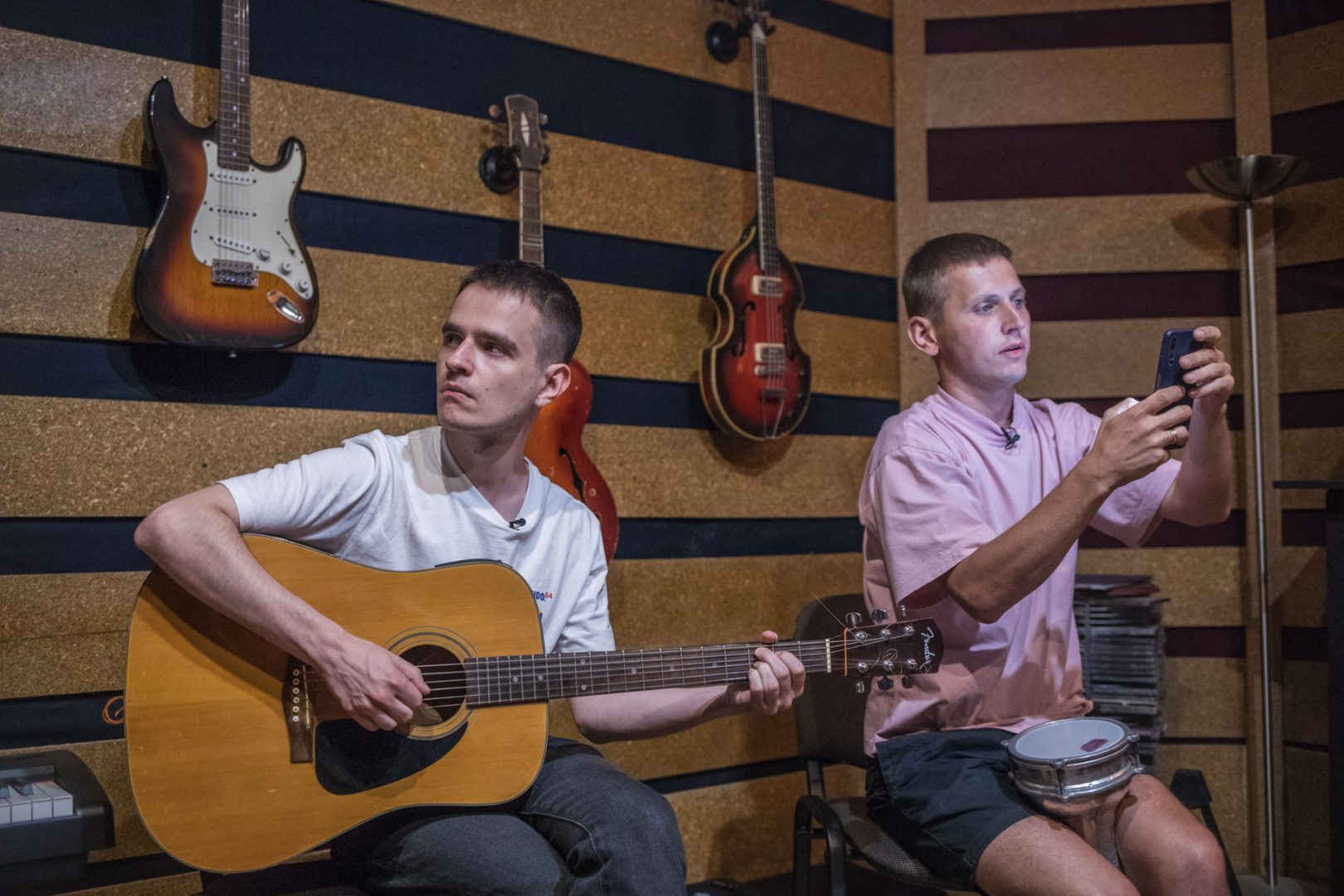
— Do you remember your first performances on the stage of Shelter+?
— Andrii: I remember coming out of the dressing room and seeing about 15 punks standing there, the Kryvyi Rih alternative crowd. And I got really scared, grabbed my guitar, played three songs and skedaddled.
— That place became something like your headquarters, didn’t it?
— Roman: We recorded our first live performances as Brunettes Shoot Blondes here. It was like a demo we could send to various musical platforms. And people would say “Wow, cool!” We made a really great recording here. Back at that time it was hard to find that kind of environment, that kind of venue.
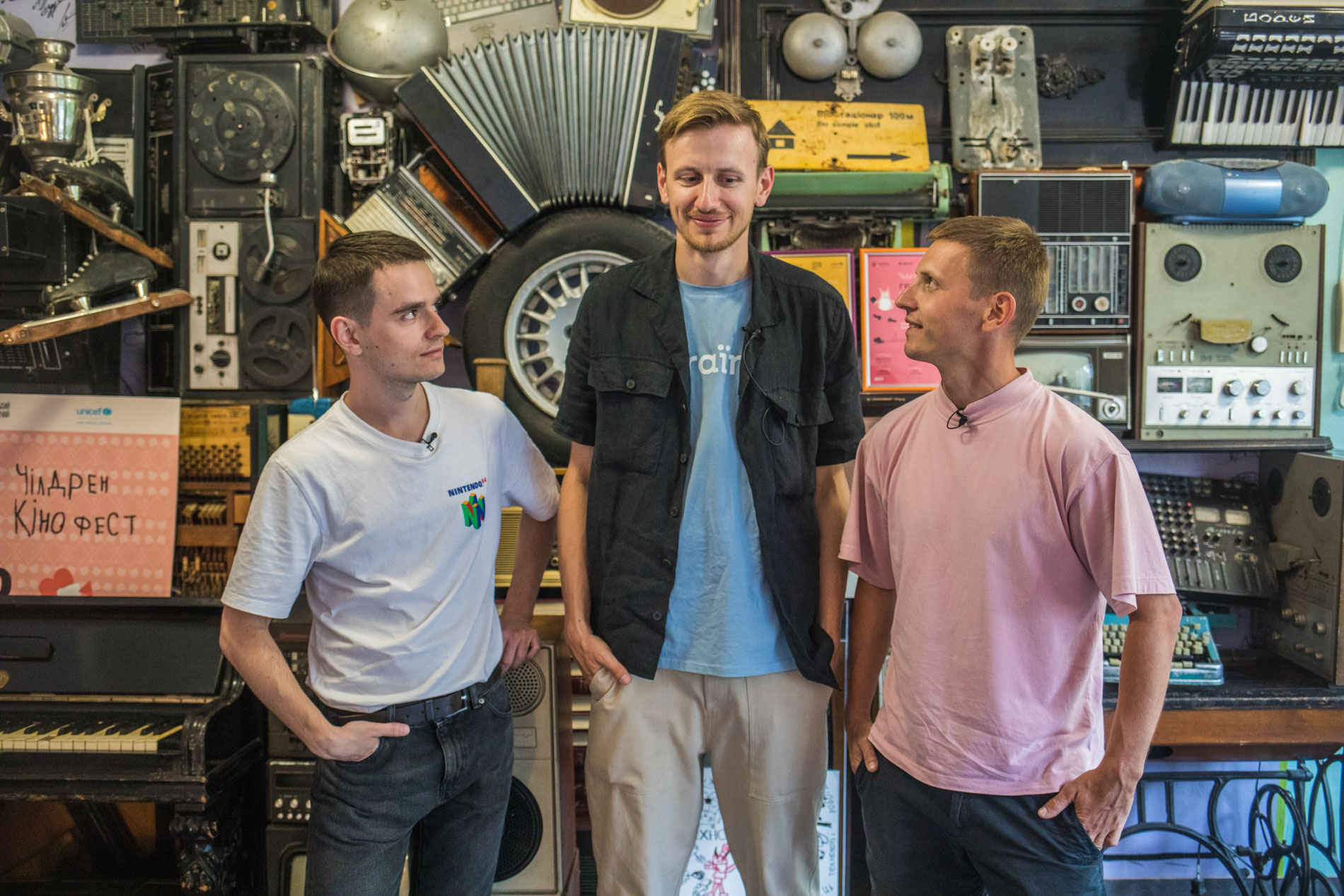
— Where exactly did you live in Kryvyi Rih?
— Andrii: Shevchenko Theatre is a central location in Kryvyi Rih. I lived not far from there as a child. That was where the alternative crowd in Kryvyi Rih used to gather. It was a place to hang out, and now Aria tribute bands play there (Aria is a Russian heavy metal band — tr.).
— Roman, did you use to live here too?
— Roman: I lived in the neighbourhood called KRES. It must be the geographical centre of the city. It’s nice there, no pollution, but it was very far for me to travel to either side of the city.
— How far is far in Kryvyi Rih?
— Andrii: I’m not sure how to explain that, because nothing seems that far away when you live here. There are no traffic jams; you can get around quickly. Even if you have to cover 20 kilometres, it’s quick in Kryvyi Rih.
— Have you been part of the alternative crowd since your childhood? Was it hard in Kryvyi Rih?
— Andrii: Well, yeah, quite hard. The place near the Shevchenko Theatre was a mecca for different subcultures because that was where the skaters, graffiti artists and BMX riders used to gather, as well as everybody who wanted to stand out from the crowd. I remember I once went to Kyiv (my brother lived there), and I went to a shop, something like Staff (Ukrainian youth clothing brand — ed.) to buy skate shoes. I bought non-matching shoelaces: one was green, the other blue. It was quite a brave move. As I walked through Kryvyi Rih — even in the very centre — I would always attract attention, because it was something out of the ordinary. And sometimes it was kind of hard. Especially later in the evening. But now I see that everything has changed somehow. I guess the new generations won’t understand this sort of risk and fear that comes with being different from others. And that’s great!
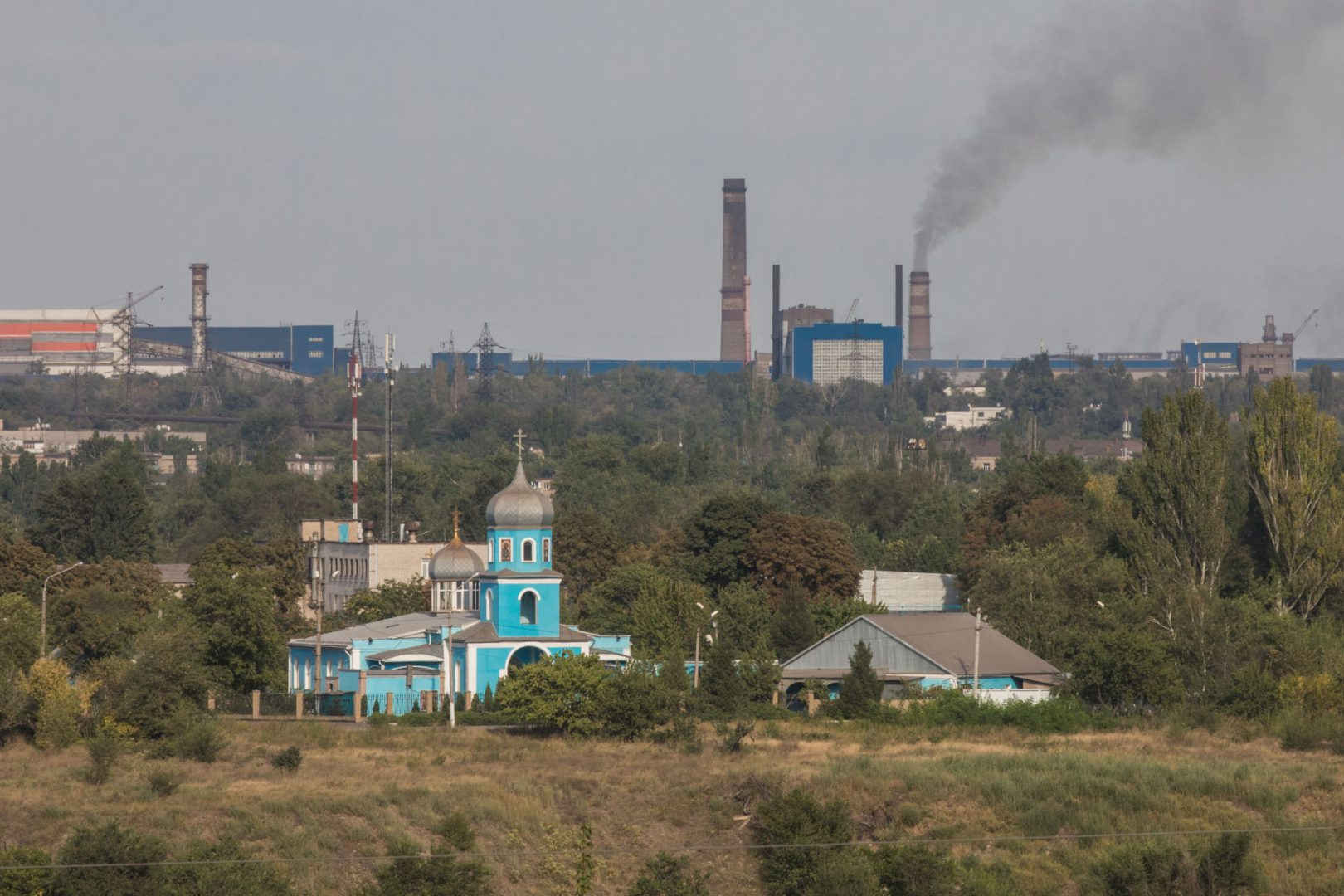
— What was that story about the wars between the neighbourhoods of Kryvyi Rih?
— Roman: We had these gangs called ‘runners’. When somebody asks “Do you know our runners from Kryvyi Rih?” and you say “Yeah, they run really well, awesome athletes!” they’re talking about a different kind of runner. There were gangs in each neighbourhood, and there were loads of young boys divided by age: younger ones, 10-year-olds; older ones, about 14; and even older ones. And all of them had their own tasks: some were making explosives or guns, others were responsible for something else. They had training in boxing or karate, and then they attacked other neighbourhoods. These wars happened all the time. A lot of those boys got injured; some lost fingers because of explosives; some got killed. Others started doing drugs; some got into crime. People’s lives were ruined.
— And it wasn’t controlled in any way?
— Roman: There were rules! If you’re out with a girl, you won’t be touched. So typically you would date a girl from another neighbourhood. And you’d be walking home with her, and everybody would be looking at you, but they wouldn’t touch you. But how you were gonna get back home was your problem. We have so many stories about having to get home by climbing up to some roof or down through some basement.
— What is the most popular genre of music in Kryvyi Rih?
— Roman: There are quite a lot of metal bands. They have a load of fans here. There’s even a rock club, and bands are always playing gigs there.
— Do you mean new bands are emerging all the time?
— Andrii: As far as I can see, for some reason there are no new local bands that play in Kyiv or around Ukraine. There are just musicians, some from the music college, others who play casual gigs. They join other bands, or provide backing for pop stars. But when it comes to new musical projects, there are very few.
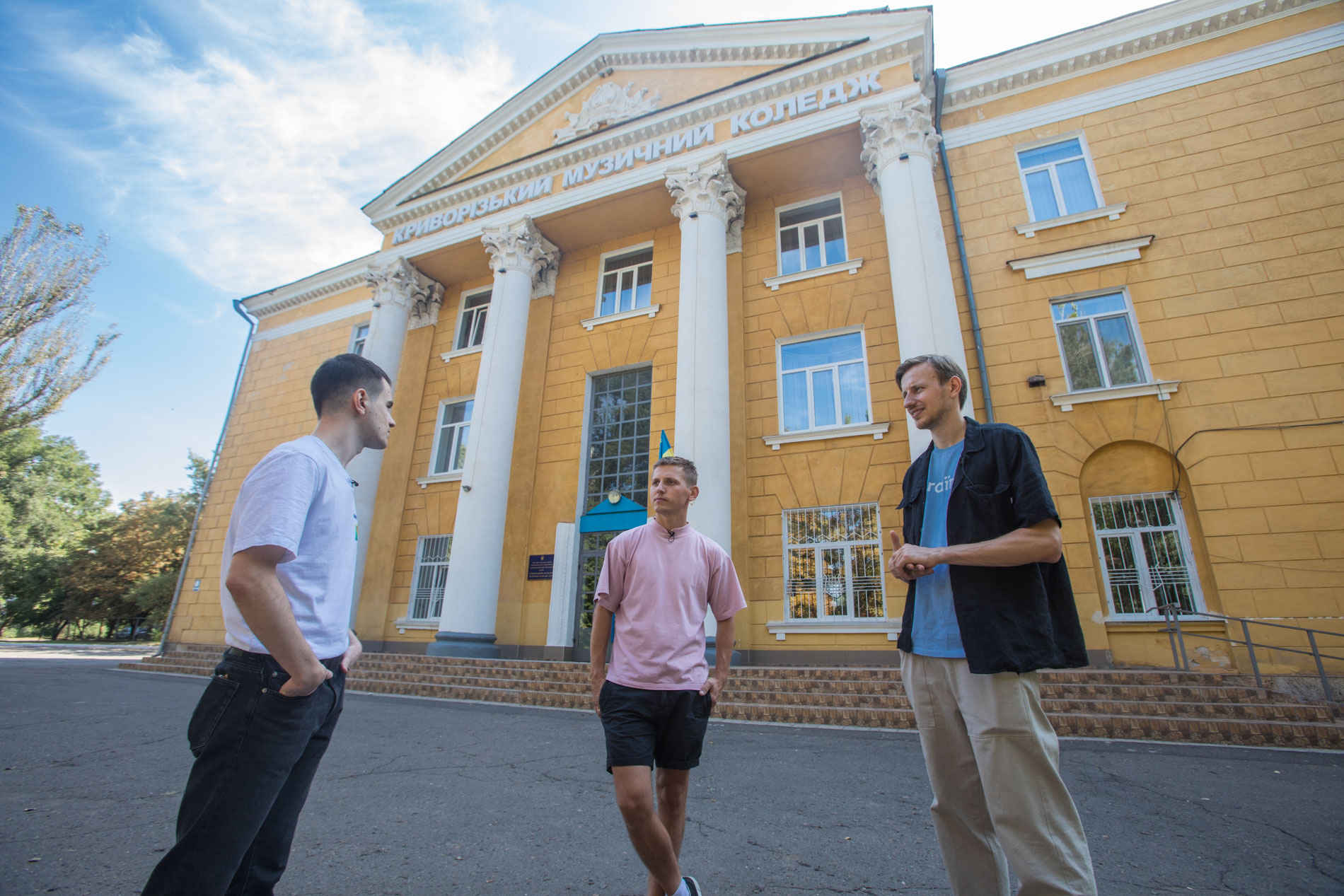
— Did you both study at the Kryvyi Rih regional music college?
— Andrii: At college, I learned to play the guitar — different études, jazz standards. And Roma used to come and we’d play together. That’s where Roma and I had some of our first rehearsals, where we learned to play rock’n’roll. Some really awesome musicians graduated from this music college. They now play with Okean Elzy (a very popular Ukrainian band — tr.) and abroad too. Real stars!
— Andrii, before Brunettes Shoot Blondes you had another band, didn’t you?
— Andrii: I had a band called Julia Sleeps At The Kitchen. Back then it made sense, because Julia was more on-trend at that time. I guess my first band was more old-school, more rock’n’roll. And Roma was playing in his band at that time, which was more on the rock side. And when we started playing together, we agreed on a kind of indie-pop-rock, some form of compromise.
— Lots of people say you remind them of K-pop!
— Andrii: Maybe. For me this style is a bit weird. I like Asian culture, Japanese pop culture, and Korean too, but for some reason it seems weird to me when combined with western pop. From a musical perspective, I mean. Visually it’s very cool.
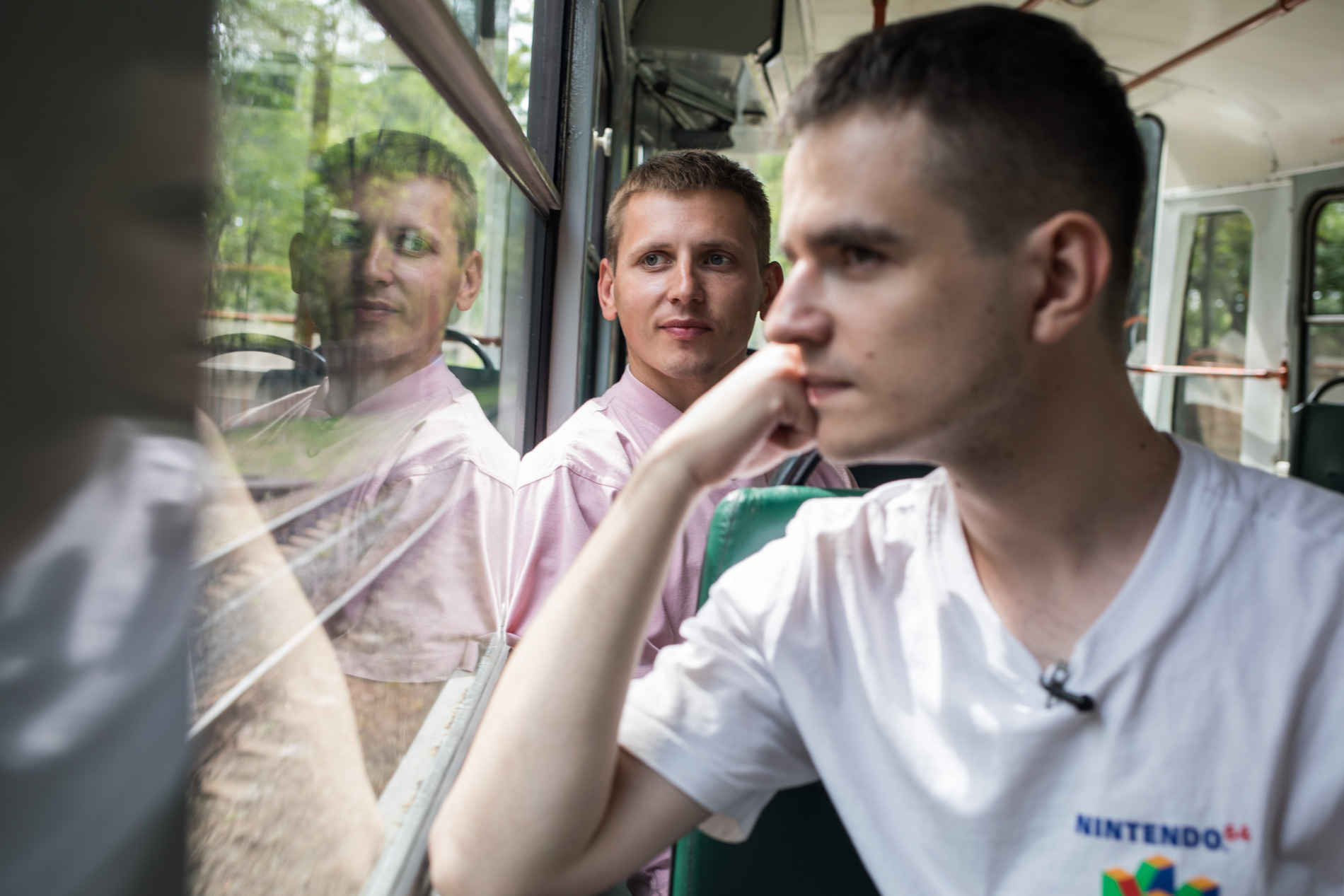
— Do people recognise you in Kryvyi Rih?
— Andrii: They do. They always mistake me for Melovin or Dantes (Ukrainian pop singers — ed.). They’re like: “Thank you for the photo, Dantes!”. I don’t let on, I just say: “You’re welcome, my pleasure!”
— Your band formed in 2010, and you haven’t released a single full album yet, have you?
— Roman: Now nobody listens to albums, only playlists.
— So you think there’s no point in releasing albums?
— Andrii: No, there is a point! Now there’s a sort of information overload. Of course, some great stars can cause excitement. They can keep everybody intrigued, like, “we’ll release an album in two years, maybe even three,” and then, bam — everybody’s listening to it. But bands like us need to remind everybody about themselves more often: a new song, a music video, all kinds of things.
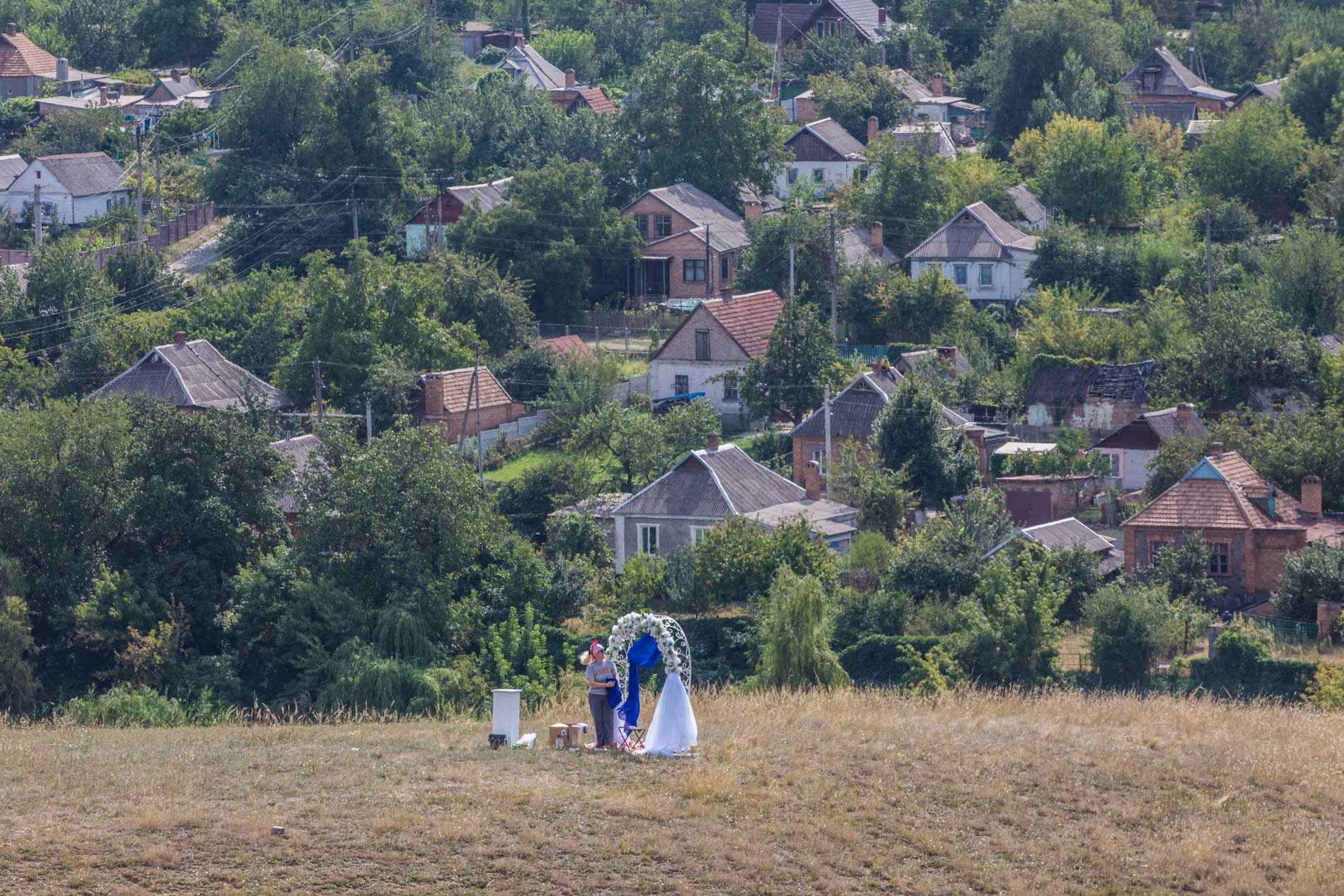
According to legend, the first settlement in the location of Kryvyi Rih was founded by a Cossack called Rih (the Zaporozhian Cossacks were a military community in the steppe regions of Ukraine — tr.). Supposedly, he was either lame or blind in one eye (the Ukrainian word “kryvyi” can mean “lame” or “lacking or blind in one eye” — tr.). The real-life prototype for this legend may have been a cossack named Ivan Rih who was elected as a Kish otaman (a chief officer of the cossack council — tr.) of the Zaporizka Sich in the 1660s and 1670s. According to another version, the name originates from a tract of land called Kryvyi Rih which preceded the settlement that was established there. At the confluence of the rivers Saksahan and Inhulets, there formed a long, crooked cape resembling a horn (the Ukrainian words “kryvyi rih” can be literally translated as “crooked horn” — tr.).
— The legend about the cossack is one of the legends regarding the origin of the city’s name, isn’t it?
— Andrii: Yes, but there’s another one. We have two rivers: the Saksahan and the Inhulets, and they form this kind of geographical horn. So, that’s the second legend, but personally I prefer the one about the cossack.
— Are there any other local myths which have now been busted?
— Andrii: Well, legend has it that Kryvyi Rih is 120 kilometres long, but I remember when we could access the Yandex.Maps website, there was a ruler tool which you could use to measure distances. The result I got was 65 kilometres. That’s just the way Kryvyi Rih is laid out: there’s the city, and there’s also a separate city, Inhulets. If I’m not mistaken, there’s some space between this part of the city and Inhulets. If we add up the lengths of this main part and Inhulets, we might get a length of around 70 or 80 kilometres.
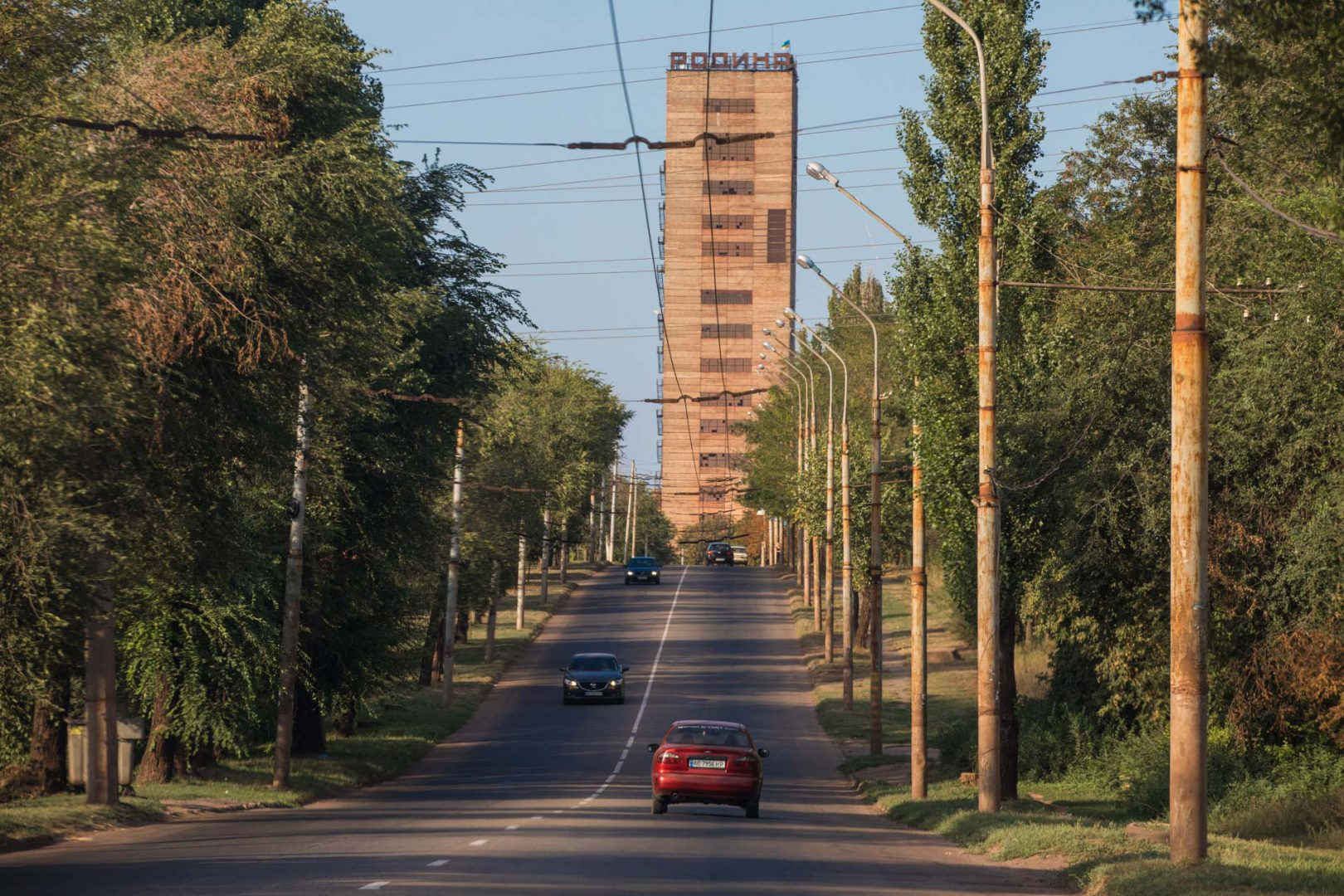
— Are there any specific words or phrases from Kryvyi Rih?
— Roman: Yes, definitely. For example, a ‘motor’ in Kryvyi Rih means a taxi. We say: “Let’s call a motor”.
— Do you live in Kyiv now?
— Roman: Yes. We moved there after we made our first music video, for “Knock Knock”. That was 5 or 6 years ago.
— Wasn’t that your second clip?
— Roman: We consider it to be our first, because we shot it ourselves. So for us, that was the beginning.
— Do you feel that Kryvyi Rih has changed in the last 5 years?
— Roman: Everything has changed. I see changes, but not in all districts, only in the central ones.
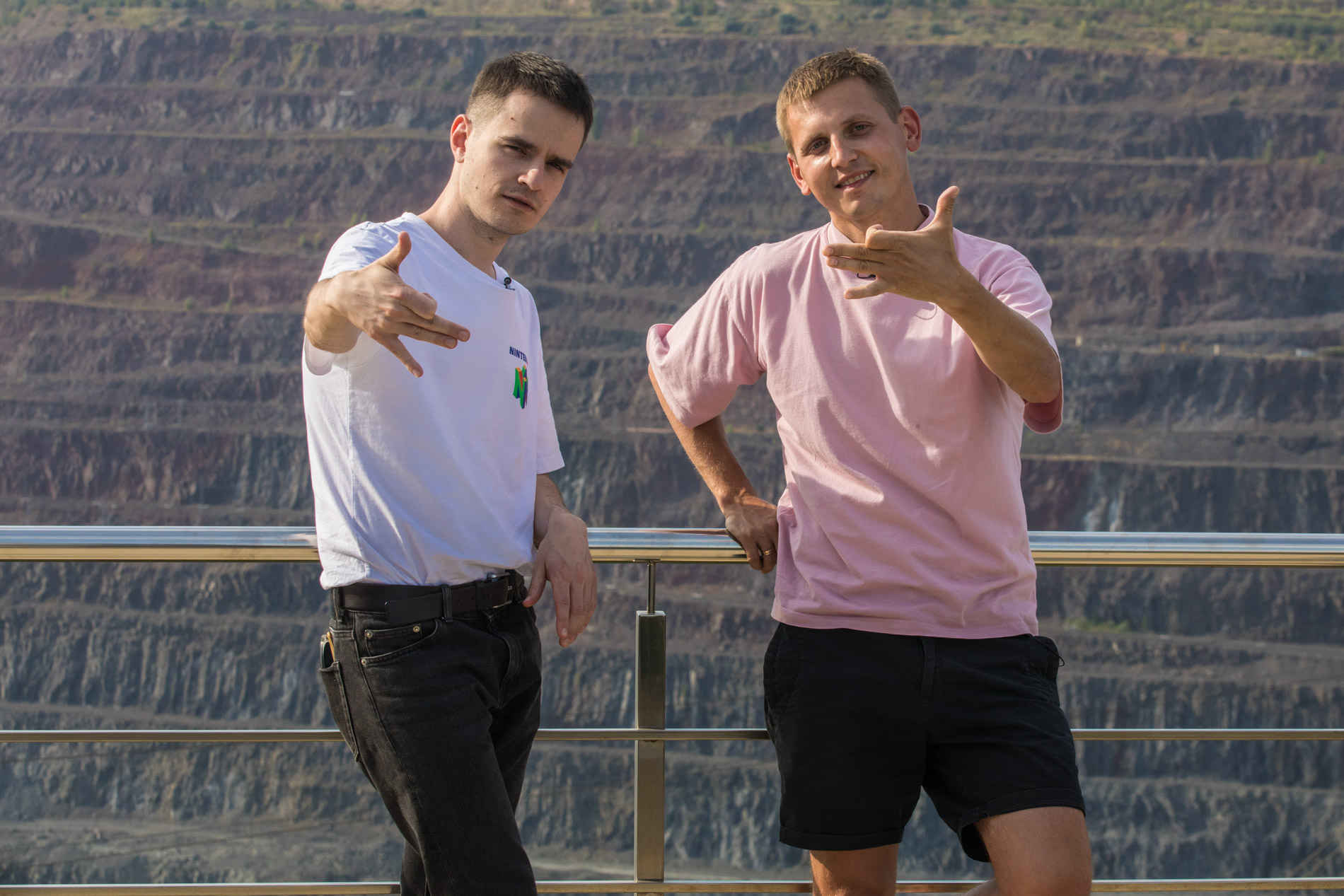
Industrialisation in Kryvyi Rih has formed mountains within half a century, while it takes nature billions of years to do the same. The Southern Mining and Processing Plant is one of 11 operating quarries in the city. Thanks to its shape and size, it was nicknamed the ‘iron heart of Ukraine’. Explosions can regularly be heard here, since the hard rock needs to be detonated. 1.55 billion tonnes of iron ore have been extracted here since 1953. The rock refuse heaps are now a tourist attraction, popular for hikes and excursions.
— Have you been to the quarry in Kryvyi Rih before?
— Andrii: I’ve never been there. I’ve heard a lot about it and seen the photos, but I didn’t expect it to be such a vast place, or so epic.

— What are your impressions of the quarry?
— Roman: It’s hard to take it all in with your eyes, because you see a deep hole with some little machines moving around inside. But when the machine comes closer, and you see it’s as big as a five-storey building — yeah, that’s impressive!
The MODR Rocks, which lie in the valley of the Inhulets river, belong to one of the region’s protected natural areas. They got their name from the nearby housing estate, MODR (a Ukrainian acronym for the communist organisation International Red Aid). The hills, also known as ‘the bald mountains’, attract rock climbers, who hold trainings and competitions here. And the Inhulets, which flows between the rocks, is a popular spot for kayaking.
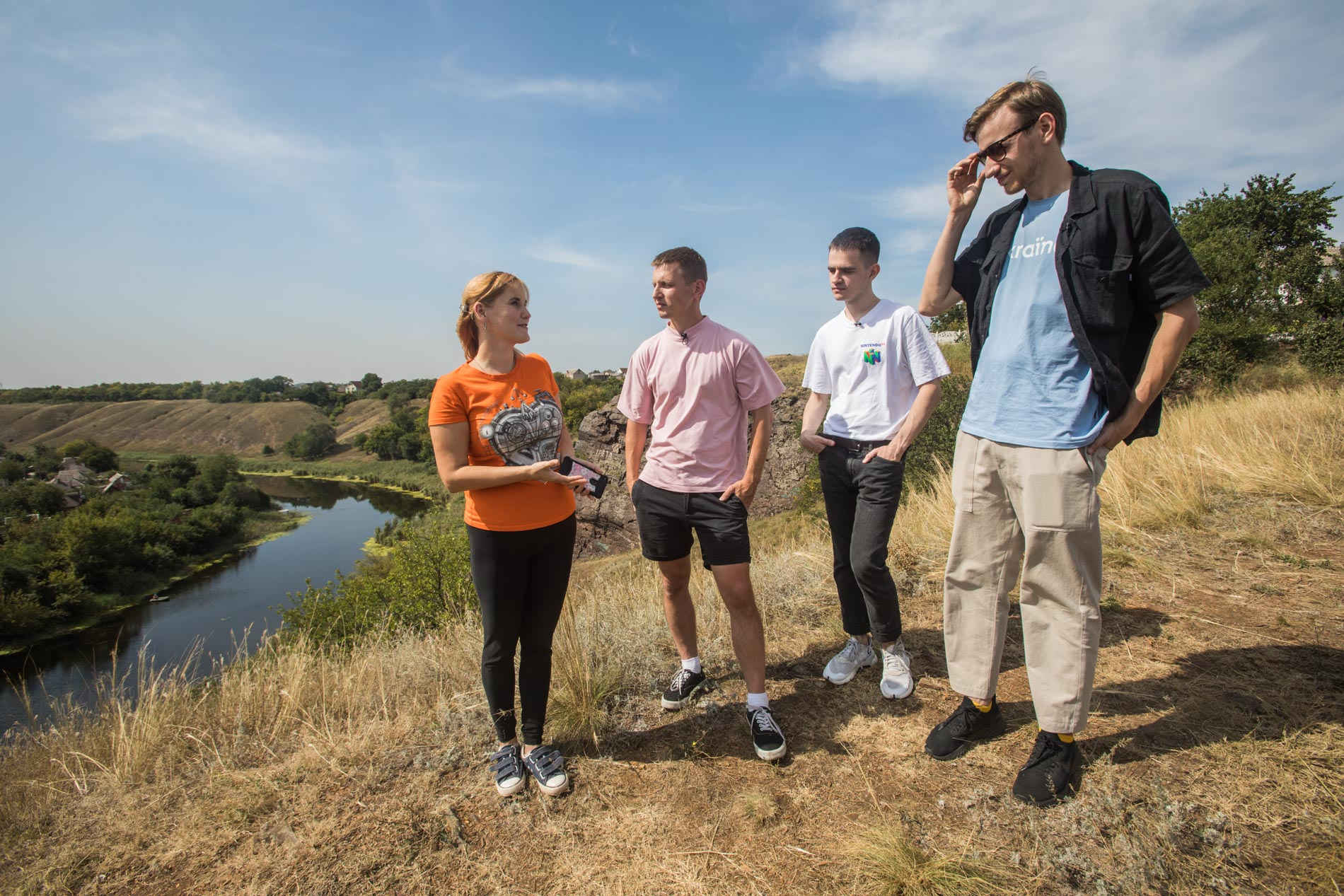
— How did you feel about the pollution in Kryvyi Rih?
— Roman: Actually, Kryvyi Rih is a very green city: there are a lot of trees here. If there weren’t, we might be in big trouble. My friends living in the central parts of the city near the industrial plants say that they never hang their laundry to dry on the balcony because it turns black in no time.
The piano in the music video for the song “Houston” was designed and made by the boys from Brunettes Shoot Blondes themselves. The multifunctional instrument combines a marimba, tambourine, tsymbaly (a Ukrainian version of the hammer dulcimer — tr.), and even castanets, while special mechanical devices enable them to reproduce the sounds of the viola, violin, and organ. It was with this song and this grand piano that the band performed at the Ukrainian National Selection for the Eurovision Song Contest 2019.
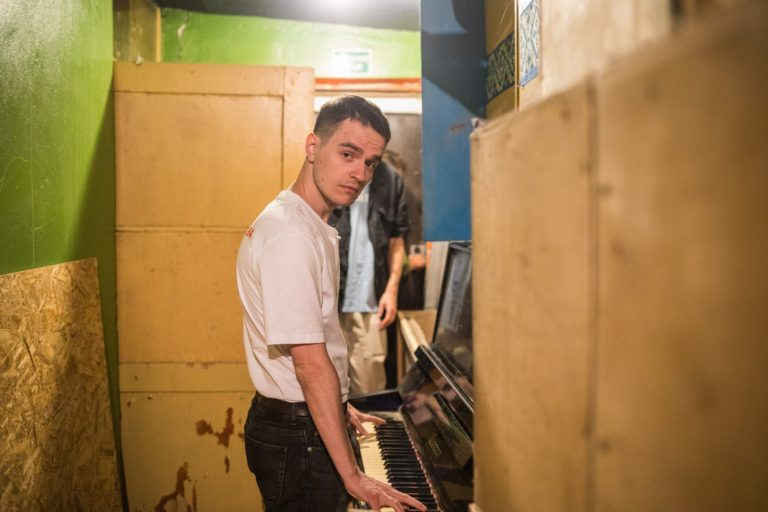
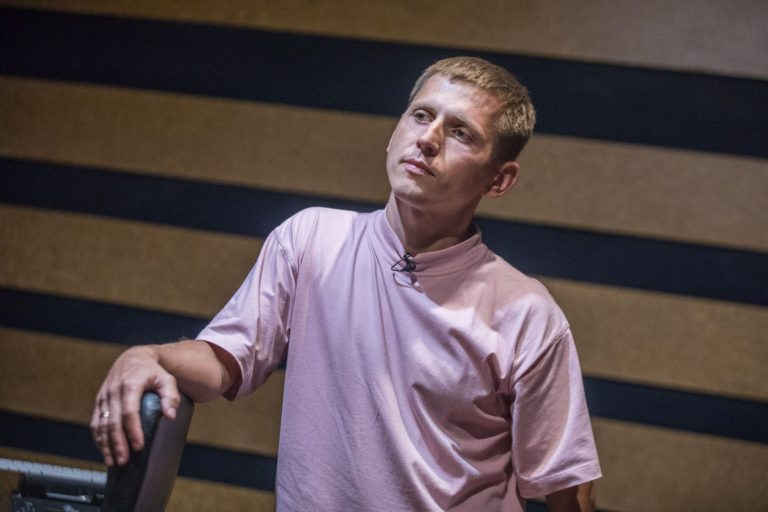
slideshow
— What happened to the piano from your music video for “Houston”?
— Andrii: Nothing, we still have it. We’re a band that really puts on a show; spectacular elements are our speciality.
— Are you planning to use it again?
— Roman: We’ll be using it at our solo concert in Kyiv. We’ll put on a fantastic show. As they say on TV: “Don’t you agree, this is something fantastic, something amazing!”.
— Where did you get it?
— Roman: We bought it in Drohobych. When we got the idea of doing something with a grand piano, making some kind of cool instrument, we browsed OLX [a platform for buying and selling — tr.] and found the cheapest one in Drohobych. And it worked out somehow, they brought it to us from there very quickly. It travelled around different workshops, studios and garages before we finished it. They wanted to make it robotic, to stuff it with electronics. But what would be the point of that? We could have just bought a Casio. We needed something mechanical. It turned out that it was easier to do this with various kinds of robots.
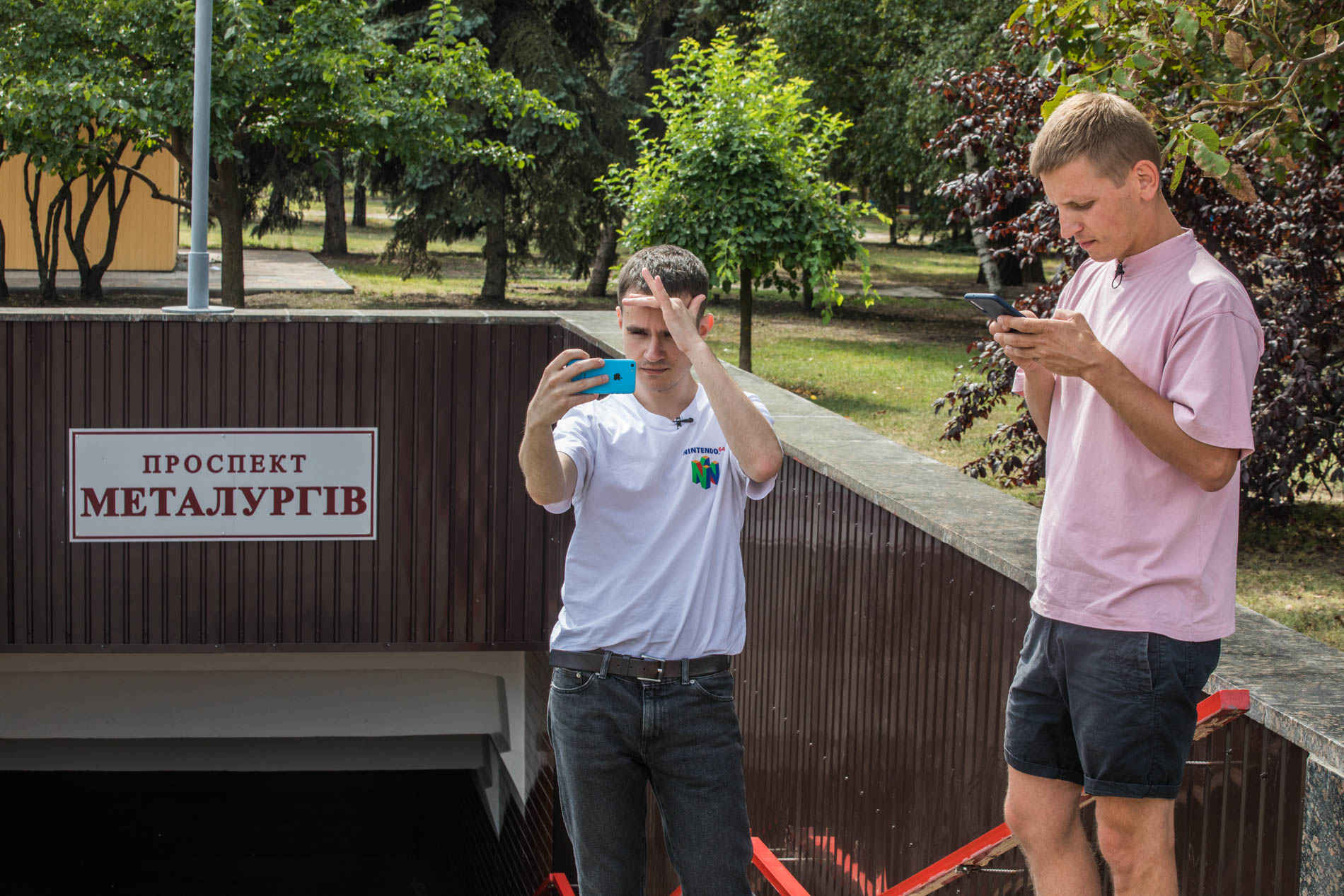
— But you did it the way you’d planned anyway, didn’t you?
— Andrii: We tried to find different people who could help us make a super-machine from a grand piano, which could be played like 20 instruments. Everybody was very surprised by this idea and just told us to get a Casio. But we were curious whether it was at all feasible to make an instrument where you could play the keys, but it would sound like a totally different instrument: violins, for example, or violas.
— You took part in the National Selection for the Eurovision Song Contest in 2019. How did it feel?
— Roman: After our first time in 2016, we agreed we wouldn’t be going back, wouldn’t take part again. Now we’re joking that we take part in it once every three years, so our next time will be in 2022. Actually, that’s not unlikely.
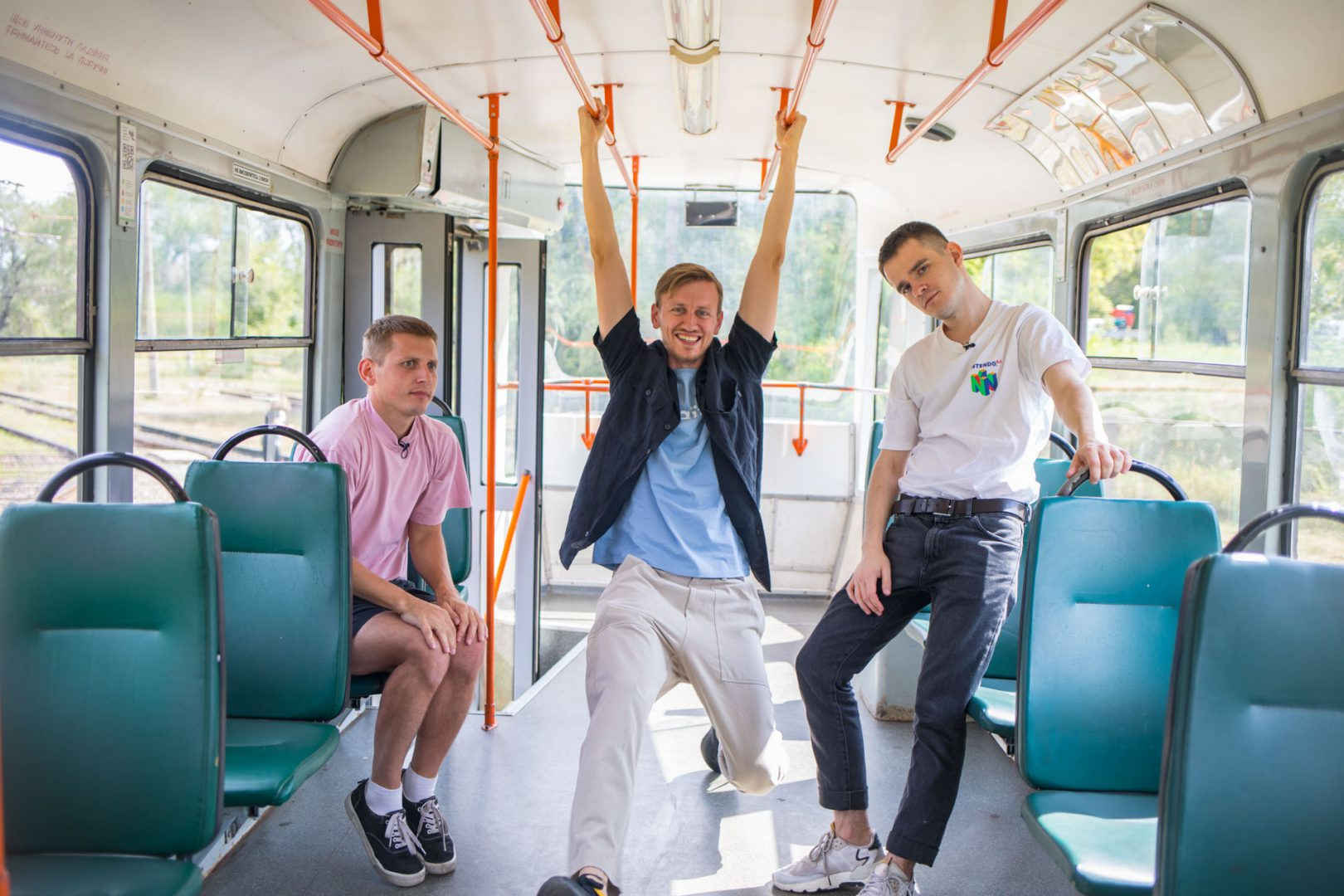
— Has anything changed after you took part in the National Selection?
— Andrii: We started getting invitations to some festivals and events, and our music was used in adverts or soundtracks. I mean, we already existed, our music was already out there, but we hadn’t had a platform to present it. So I reckon that unfortunately, Eurovision is now the only way to take your music to the masses.
— Many Ukrainian bands have a huge problem with the English language. But that’s not the case with you. How come?
— Andrii: I guess I listened to a lot of British and American music from the very beginning, and really wanted to imitate those sounds. This must be an easier task for a musician than for other people, because if you have an ear for music, it’s easy to copy. I reckon the next generation won’t have this problem at all: now everybody’s growing up with this music, YouTube, streaming platforms. That seems to be the general trend: to do something European.
— Has anything changed after you took part in the National Selection?
— Andrii: We started getting invitations to some festivals and events, and our music was used in adverts or soundtracks. I mean, we already existed, our music was already out there, but we hadn’t had a platform to present it. So I reckon that unfortunately, Eurovision is now the only way to take your music to the masses.
— Many Ukrainian bands have a huge problem with the English language. But that’s not the case with you. How come?
— Andrii: I guess I listened to a lot of British and American music from the very beginning, and really wanted to imitate those sounds. This must be an easier task for a musician than for other people, because if you have an ear for music, it’s easy to copy. I reckon the next generation won’t have this problem at all: now everybody’s growing up with this music, YouTube, streaming platforms. That seems to be the general trend: to do something European.
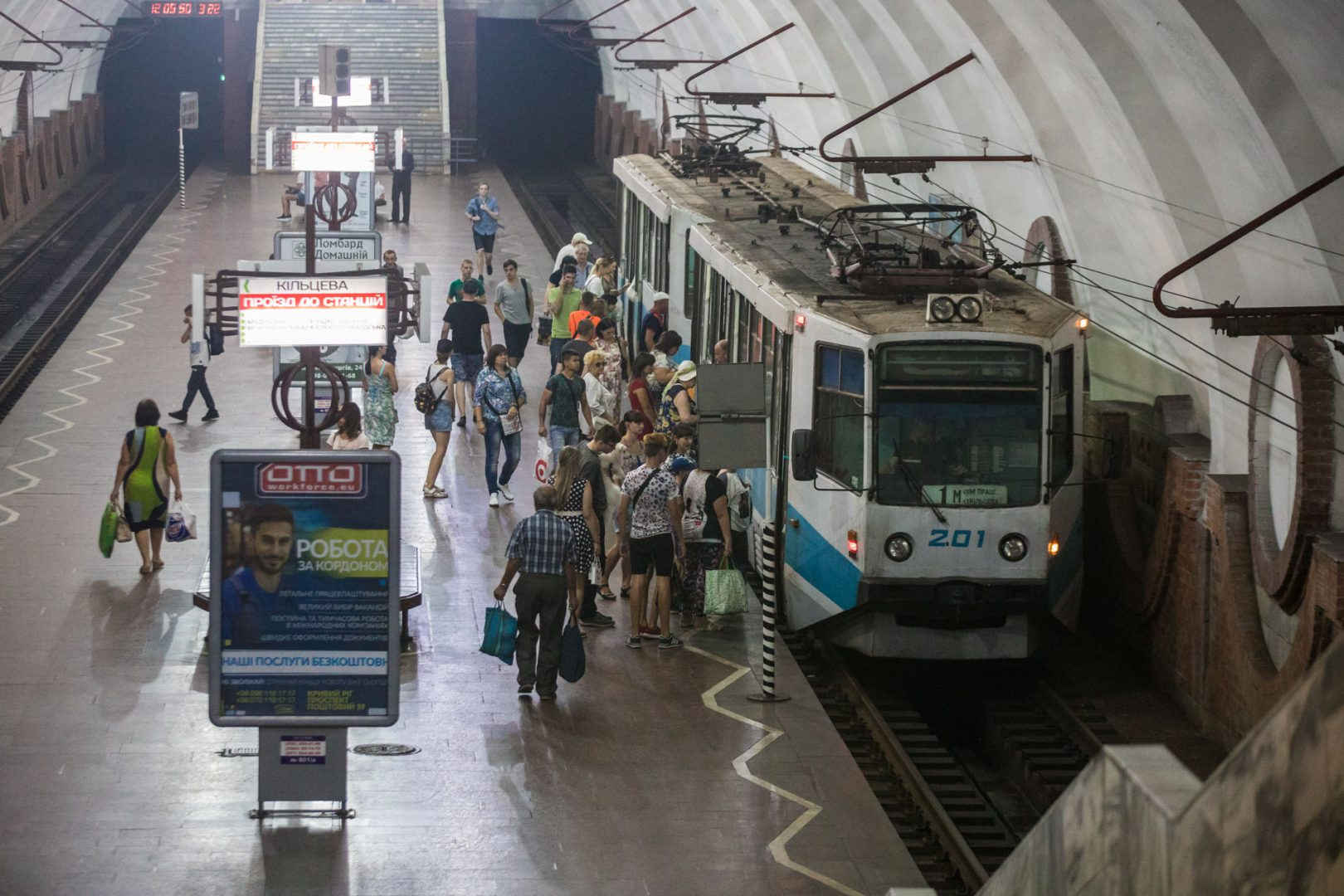
The Metrotram is a transport system built according to the standards of a metro rail system, which uses trams as rolling stock. While globally it’s a common mode of city transport, for Kryvyi Rih it’s a tourist attraction. The project was designed in 1972, and construction work started two years later. Because of the financial crisis and the frequent flooding of the tunnels with groundwater, the high-speed tram in Kryvyi Rih was launched in late 1986.
When Ukraine became independent, the underground tram line was extended. In spite of the complicated economic situation, construction continued in accordance with metro system standards. Today, the line is 18 kilometres long and has become the only transport system in Ukraine that officially drives on the left-hand side.
— Do you know the history of how the Kryvyi Rih metro was built?
— Roman: I don’t! I’ve always thought it was a high-speed tram. Then, when I found out it was also a ‘metro’, as you say, and when people asked me why we had trams in the metro, I was like, “What’s wrong with that?”
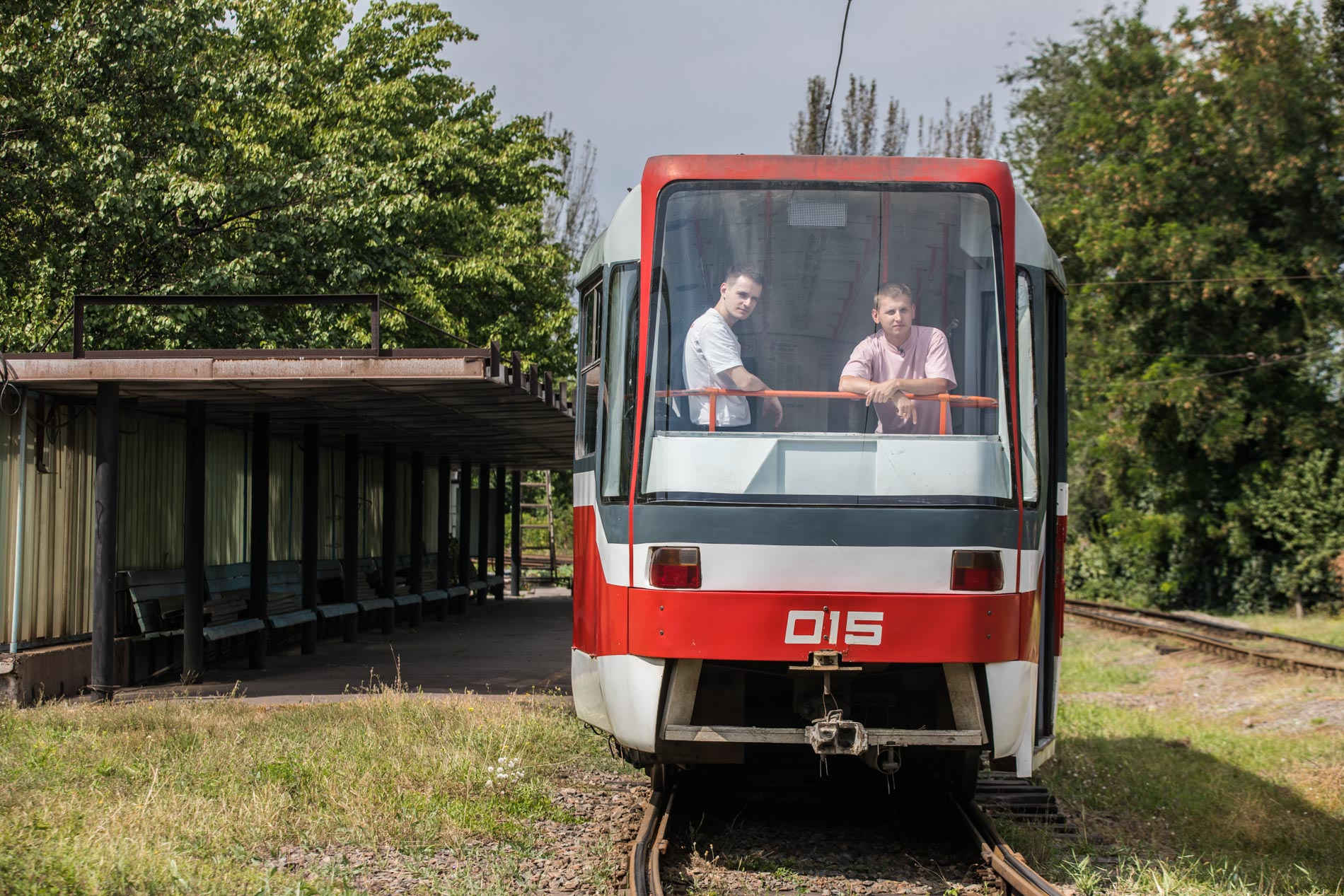
— But it’s a unique spot in Kryvyi Rih, isn’t it?
— Andrii: There’s another city in Russia (Volgograd — ed.) where they have a similar wonder. This is the only place in Ukraine where you can see a tram in the metro. But sometimes it happens that you walk in and find it empty.
— Can the Kryvyi Rih metro be considered one of the city’s tourist spots?
— Andrii: It’s on the required tour! It’s like climbing the Eiffel Tower in Paris — you simply must ride the tram in Kryvyi Rih.

